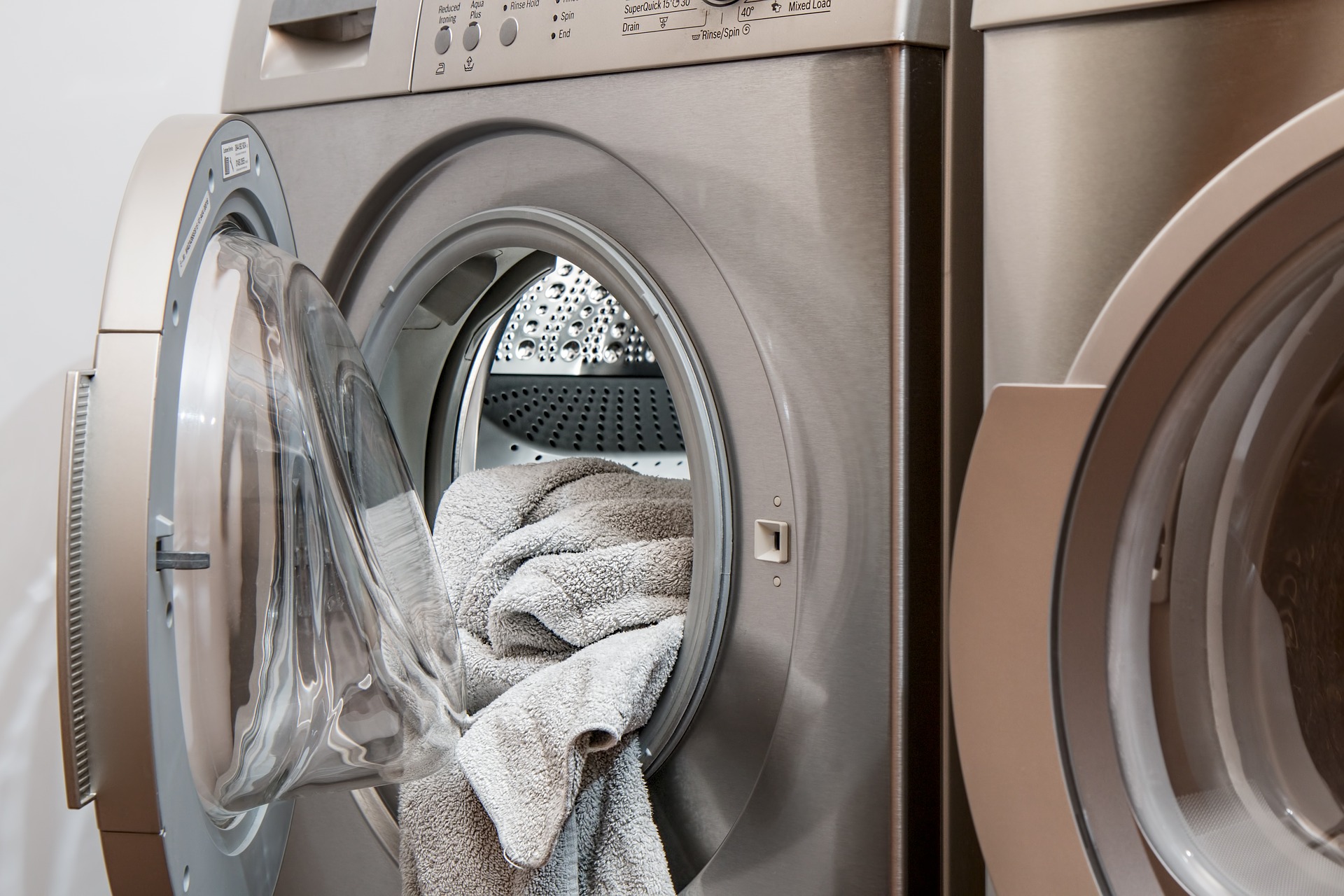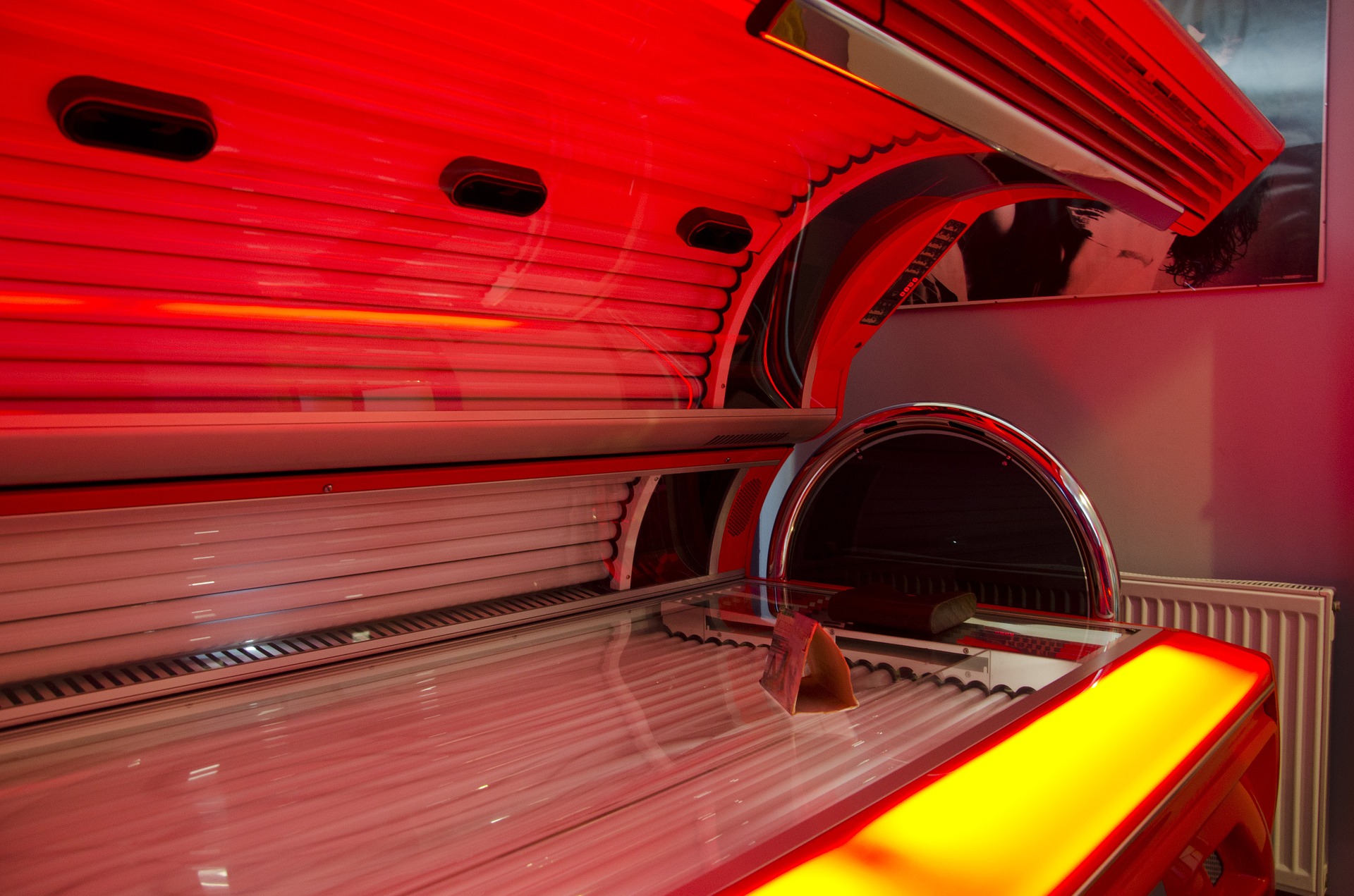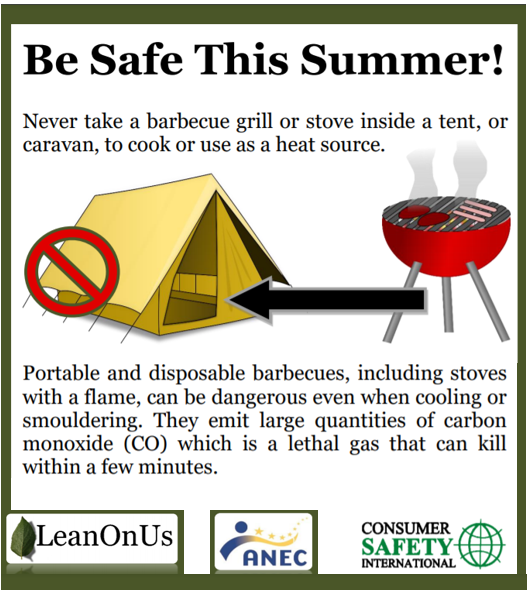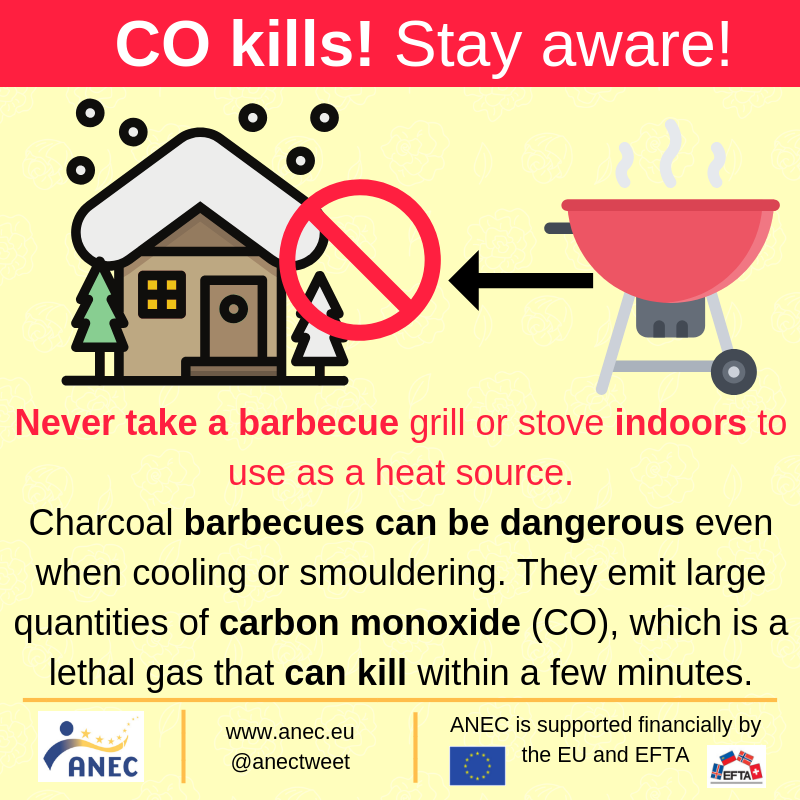
In the modern age, it is difficult - almost impossible - to imagine living in a house without the domestic electrical appliances that make consumers’ daily lives easier: the microwave oven, refrigerator, toaster and washing machine to name only a few.
Unfortunately, people still die or are seriously injured in accidents caused by faulty domestic appliances. ANEC participates in the standardisation of domestic appliances in order to lessen the risk of accidents and ensure that these appliances can be used safely by all consumers, regardless of age or ability. We also aim at increasing their energy efficiency.
Household appliances are subject to EU legislation and fall within the scope of the Low Voltage Directive 2014/35/EU (electrical household appliances), the Gas Appliances Regulation (EU) 2016/426, the Machinery Directive 2006/42/EC, or the General Product Safety Directive 92/59/EEC.
Our work in the area of household appliances is co-ordinated through the ANEC Domestic Appliances (DOMAP) WG.
Work areas
1. Safety of household appliances
Consumers use many electrical domestic appliances such as microwave ovens, refrigerators, toasters, water heaters. It is crucial these appliances are safe to use. The Domestic Appliances WG follows standardisation work in CENELEC TC 61 which deals with safety requirements for electrical household appliances.
2. The use of appliances by vulnerable consumers including children, older people and people with disabilities
The first generation of European standards for domestic electrical appliances (the EN 60335-2 series) featured a ‘limitation clause’ or ‘exclusion clause’. This presumed that young, elderly or disabled people would use these appliances only under supervision.
Further to an ANEC campaign that started in 2003, supported by Technical Studies, CENELEC TC 61 has revised its standards to take into account the use of appliances by children, older people and persons with disabilities, based on the proposals from ANEC. The first six revised standards were adopted in 2010, and EN 60335 Part 1 was further revised in 2011. These revisions represented a huge achievement for ANEC.
The EN 60335 series comprises over 100 Part 2 standards. About 60 standards have already been revised to take into account the safety needs of vulnerable consumers. The culmination of this work represents a huge step forward for the safety of European consumers, especially children, older people & persons with disabilities.
In 2012, the first proposals for the revision of the parent international IEC 60335 series of standards were sent to IEC TC 61 by CENELEC for adoption as International Standards. This represented another milestone in ANEC’s campaign and will benefit consumers globally. In order to facilitate progress at the international level, ANEC - in collaboration with Consumers International – is developing proposals for revision of the Parts 2 to the IEC 60335 standards in TC 61 with respect to the safety of children, older people, and persons with disabilities.
The DOMAP WG is following this work, in cooperation with the ANEC Accessibility WG and the Child Safety WG.
3. Surface temperatures of domestic appliances
The sensitivity of their skins and slower reaction times leave children, older people and persons with disabilities at increased risk of burns in the household environment. The potential risks peak when the handles and knobs of household appliances (such as irons and toasters) are too hot. In 2007, CENELEC Guide 29 ‘Temperatures of surfaces likely to be touched - Part 1: Temperatures of hot surfaces’ was issued, at the request of the European Commission, to tackle the problem of hot surface temperatures. ANEC participated in the development of the Guide and monitors that relevant product standards follow its provisions.
The revised EN 60335 standards (see above) represent a step in the right direction to making household appliances safer for consumers of all ages and abilities. However, ANEC regretted that the issue of surface temperature limits for handles and knobs were not tackled during the revision. ANEC, as well as several Member States, is also concerned that surface temperature limits (e.g. of oven doors, of the outside part of toasters) in the revised standards are not in line with the limits of CENELEC Guide 29.
In 2012, IEC TC 61 asked its Maintenance Team 4 (MT4) to review several parts 2 of IEC 60335 to determine which needed to be reviewed with respect to accessible surface temperatures. ANEC & Consumers International participate in this work. At the European level, CENELEC TC 61 set up a task group under its WG 1 in 2017 to determine surface temperature limits according to Guide 29, starting with toasters. ANEC participates in the work.
4. Child appealing electrical household appliances
Although more and more child appealing products are entering the European market, there are still no clear indications in EU legislation or in European standards on how it is assessed and/or decided whether a product is considered to be child appealing. There is a need for a common approach and clear criteria. If child-appealing appliances are placed on the market, they need to be safe for children to use or to come into contact with in the home environment, whether they are connected to the mains supply or not.
It is important to note the distinction between ‘child-appealing appliances’ and ‘toy-like appliances’. ‘Toy-like’ implies a certain play value, but it is clear in the case of electrical household appliances that children are interacting with the appliances because they are appealing to children due to their characteristics: children do not play with them. Following pressure from ANEC, CENELEC TC 61 WG 8 ‘Child-appealing electrical appliances’ re-started its activities in 2017. The main purpose of the work is to revise clause 22.44 of EN 60335-1 ‘Household and similar electrical appliances – Safety - General requirements’ regarding child appealing electrical appliances.
5. Environmental and performance aspects
ANEC pays attention, not only to the safety of domestic appliances, but also to environmental aspects, such as performance, eco-design and energy labelling of household appliances. This work is coordinated with the ANEC Sustainability WG.
Please find more information here: https://www.anec.eu/priorities/sustainability
6. Prevention of carbon monoxide (CO) poisoning
Carbon monoxide is a colourless, odourless and poisonous gas. When carbon-based fuels do not burn properly, excess CO is produced. When CO enters the body, it prevents the blood from taking oxygen to cells, tissues, and organs. Although no accurate data are available, there are numerous fatalities in the EU annually due to CO poisoning.
During the holiday season, for instance, many consumers go camping and take their barbecue grills with them. But when it rains and they cannot cook outside, or when it is cold, some take their barbecues inside or indoors, either to heat the tent or caravan, or to cook. The indoor use of charcoal barbecue grills creates an accumulation of carbon monoxide that can lead to fatal accidents. Prevention of CO poisoning is therefore a priority for the DOMAP WG.
In 2016, ANEC pressed CEN TC 281 to develop an amendment to the European standard on barbecues, introducing a pictogram to warn consumers that the barbeque should not be used indoors. ANEC participates in the work of CENELEC TC 216 on the revision of the European standard for CO detectors, as well as in CEN TC 49 ‘Gas cooking appliances’. In 2013, ANEC and Consumer Safety International (CSI) issued a leaflet on the dangers from the “Silent Killer”. The leaflet explains how carbon monoxide gas has no colour, taste or smell and strikes without warning. It also gives simple tips to recognise and prevent CO intoxication, and gives guidance on what to do in case of a CO poisoning.

7. Market surveillance
Market surveillance is also important, because the best legislation or standard is of no use if not properly enforced. ANEC therefore monitors and participates as a stakeholder in European-coordinated surveillance actions related to domestic appliances.
Activities in the European & International standards bodies
ANEC is represented in the following Committees:
- CEN TC 144 WG 7 ‘Garden equipment’
- CENELEC TC 61 ‘Safety of Household and Similar Electrical Appliances’
- CENELEC TC 61 WG 1 ‘Relation between standardisation and legislation’
- CENELEC TC 61 WG 7 ‘Electric Toys’
- CENELEC TC 116 ‘Safety and environmental aspects of electric motor-operated hand-held and transportable tools and lawn and garden machinery’
- CENELEC TC 116 WG 2 ‘Electric motor-operated hand-held and transportable tools’
- CENELEC TC 116 WG 5 ‘Electric motor-operated lawn and garden machinery’
- CENELEC TC 216 ‘Gas detectors’
- CEN-CENELEC SRAHG ‘Gas Appliances Regulation’
- CENELEC TC 216 WG 9 ‘Carbon monoxide detectors’
- IEC TC 61 ‘Safety of Household and Similar Electrical Appliances’
- IEC TC 61 MT 4 ‘Temperature limits, resistance to heat & fire, use of test probes and presence of children’
- IEC TC 61 WG 44 ‘Safety of robots for household and similar use’
- IEC TC 61 WG 49 ‘Circular economy and material efficiency’
- IEC ACOS - Advisory Committee on Safety
Other
- European Commission’s Low Voltage Directive Working Party
- European Commission’s Gas Appliances Working Group
- European Commission’s Machinery Directive Working Group
- European Commission’s Consumer Safety Network
- European Commission’s Coordinated market surveillance activities on the safety of products
- EC Fire Information Exchange Platform (FIEP)
- Steering Group EUFireStat Project
ANEC is following the work of following committees by correspondence:
- CEN Advisory Nucleus on Machinery Safety
- CEN Sector Forum Gas – Utilization
- CEN TC 46 ‘Fireplaces for liquid fuels’
- CEN TC 93 ‘Ladders’
- CEN TC 144 ‘Tractors and machinery for agriculture and forestry’
- CEN TC 152 ‘Fairground and amusement park machinery and structures – Safety’
- CEN TC 153 ‘Machinery intended for use with foodstuffs and feed’
- CEN TC 281 ‘Appliances, solid fuels and firelighters for barbecuing’
- CEN TC 281 WG 1 ‘Appliances, solid fuels and firelighters for barbecuing’ (work completed)
- CEN TC 295 ‘Residential solid fuel burning appliances’
We also follow the work of CENELEC TC 59 X ‘Performance of household appliances’ and of several of its working groups, dealing with laundry appliances, dishwashers and vacuum cleaners. More about it: http://www.anec.eu/priorities/energy
News
Are household appliances really safe for all consumers?
ANEC’s campaign to eliminate the discriminatory “exclusion clause” from European (and now international) standards for domestic electrical appliances has resulted in literally hundreds of millions of products sold each year being safer and more accessible for all consumers. See more details about our success campaign under https://www.anec.eu/priorities/accesibility
Turning up the heat on sunbeds
Ultraviolet Radiation (UVR), including that emitted by sunbeds, is a total carcinogen, as it acts both as an initiator and a promoter. Review of scientific evidence found that in Europe, almost 3.500 of 63.942 new cases of melanoma diagnosed each year may be related to sunbed use, women representing 68% of this figure. Almost 500 women and 300 men die each year from a melanoma as a result of indoor tanning. A
scientific opinion of the EC SCHEER committee on the dangers of sunbeds was published in 2016.
ANEC attended the Association of European Cancer Leagues (ECL) ‘Sun and UV Safety’ Workshop in 2018, which discussed the updating of the ECL sun safety recommendations, as well as legal perspectives on regulating sunbed use. We supported the updated ECL sun safety recommendations.
Further to a discussion on sunbeds at the June 2021 meeting of the EC Low Voltage Directive (LVD) Working Party, the Commission asked for suggestions to improve the standard EN 60335-2-7 on sunbeds, as well as views on the best legislative framework to ensure the safety of sunbeds. ANEC replied through a short position paper (https://bit.ly/3oiOjY8), welcoming and agreeing to bring the debate on sunbeds to a higher political level. From the perspective of electrical product safety requirements (LVD), ANEC supported the Enquiry on prEN IEC 60335-2-27 ‘Household and similar electrical appliances - Safety - Part 2-27: Particular requirements for appliances for skin exposure to ultraviolet and infrared radiation’ in 2021. However, we mentioned that we do not have sufficient familiarity with UV radiation aspects to be able to judge whether the limits in the draft comply with the classification and maximum irradiances decided by the EC. In the paper, we agree with the Association of European Cancer Leagues (ECL) on the need for warnings, but disagree with the European Sunlight Association (ESA) which proposes to compare sunbed limits with exposure to (natural) sunlight. Finally, we stress that, if sunbeds are to be kept on the market, enforcement is key. Recent market surveillance in the UK on product related aspects (lamps) and service-related aspects (tanning salons) showed that many sunbeds were not compliant with the standard. We would welcome a new joint market surveillance action in this respect.

ANEC shouts out on the “silent killer”
Carbon monoxide (CO) is a colourless, odourless gas that can be poisonous. When carbon-based fuels do not burn properly, poisonous excess CO is produced. When CO enters the body, it prevents the blood from bringing oxygen to cells, tissues and organs. With a mortality rate of 2.24 for each 100.000 persons, in Europe, CO kills more people annually than AIDS or skin cancer. Studies indicate that fatal CO intoxications have increased during past years, among elderly persons in particular.
EN 1860-1/A1 ‘Appliances, solid fuels and firelighters for barbecuing – Part 1: Barbecues burning solid fuels - Requirements & test methods’ was adopted in 2017. ANEC was influential in ensuring this amendment which introduces a safety symbol to warn consumers not to use a barbeque indoors because of the risk of carbon monoxide (CO) poisoning. Some consumers use barbecue grills to heat a tent or caravan, or to cook in case of rain. In April 2018, we launched the leaflet, ‘Be Safe This Summer’, to help educate children and young adults on the dangers of carbon monoxide poisoning, and to warn that ‘Misuse of a BBQ grill can kill!’. The leaflet is available in English, French, Romanian, Spanish, Italian, Polish and Russian, and can be found on the campaign page, which details other ANEC activities related to the prevention of CO poisoning. The leaflet was re-launched in June, just before the start of the FIFA World Cup.
In April 2018, we launched the leaflet, ‘Be Safe This Summer’, to help educate children and young adults on the dangers of carbon monoxide poisoning, and to warn that ‘Misuse of a BBQ grill can kill!’. The leaflet is available in English, French, German, Romanian, Spanish, Italian, Polish and Russian, and can be found on the campaign page, which details other ANEC activities related to the prevention of CO poisoning. In 2021, an Arabic translation of the leaflet was published.


We continued the collaboration with our partners to campaign on the prevention of CO poisoning, through the campaign ‘Don’t let the next headline, be your deadline!’, to raise awareness of the CO dangers that college and university students may face when living in rented or shared accommodation.
As accidents involving carbon monoxide (CO) are more common during the colder months, ANEC also reminds consumers on social media never to use a charcoal barbecue indoors as a heating source, because of the risk of carbon monoxide poisoning.
ANEC will continue to work to raise awareness among consumers and to spread the word.
EU FireStat - Closing data gaps
In December 2020, we welcomed an invitation from DG GROW to participate in the Steering Group of the new EU FireStat Project. The European Parliament and the Fire Information Exchange Platform (managed by the EC) have identified a need to explore the potential of more coordinated and harmonised fire safety data and statistics at the European level.
The aim of the project is to map the terminology used, and the data collected, by EU Member States regarding fire events, and to propose a common terminology and a method to collect the necessary data in each Member State with a view to obtain meaningful datasets.
During the Steering Group meetings, ANEC stressed the importance of the quality of data. Much data is from official sources only which does not include firefighters’ organizations/unions. As their views may not necessarily concur with those of the regulators, it is important to allow them to contribute and establish the fullest view possible. We also believed “near-misses” may not necessarily be included in official figures, although these can help identify future fire safety problems. A near miss is an event where a serious fire had been prevented by e.g. a sprinkler system operating or a flame-retardant material stopping the spread of a fire. Such near-misses may not result in the fire service being called, or the incident recorded, but could have a significant impact on future provision of such systems and point the way to more effective fire safety solutions.
In February 2022, we welcomed the EU FireStat Project draft final report, reiterating the importance of near misses to be included.
Evaluation of the LVD
DG GROW is conducting an evaluation of the Low Voltage Direction (LVD) 2014/35/EU, by analysing the function and performance of the Directive in achieving its objective relating to the internal market and the safety of consumers. ANEC was interviewed to discuss the current functioning of the Directive, problems and potential solutions.
We believe the LVD, which covers the safety of electrical household products, has generally worked well in providing a good level of protection for consumers throughout the EU.
Nevertheless, we believe improvement to the Directive is possible in order for it to reflect the state of the art. These include a lowering of the voltage to zero so that products, such as lithium batteries below 50V, would be covered by the scope of the LVD. In addition, as many new products make use of technological innovation, the scope of the Directive must be updated to reflect the concept of ‘security for safety’, in order to reflect cybersecurity and the data security of connected products.
Concerning the main obstacle to the effective application of the LVD at EU/national level, we argue for market surveillance to be strengthened as it is fragmented, inadequate and poorly resourced. We consider there is an urgent need to establish a European framework for market surveillance in order to ensure a coherent approach to market surveillance activities across Member States, and to make more financial and human resources available for surveillance activities. Market surveillance of online sales is crucial.
In order for market surveillance authorities to have an overview of the enormous range of LVD products on the market, ANEC encourages the development of a product registration database for LVD products, similar to the obligations set in the Regulation (EU) 2017/1369 on energy labelling.
In order to adapt the LVD in view of changing markets, new technologies and an evolving regulatory landscape, we believe that there should be a provision in the LVD to allow for co-operation between the EC, Member States and stakeholders (including consumers) to specify the essential safety requirements without amendment of the Directive itself. This comitology procedure should also include the possibility to set limit values.
During the past years, there have been several Formal Objections from authorities against standards for electrical household products, of which the majority remains unsolved, often due to opposition from industry. We call on authorities in the EU to become more engaged in the standards process. We do not believe it enough to rely on the Formal Objection procedure alone. We also look to the EC being given greater powers in seeking solutions to Formal Objections.
More generally, we repeat our long-standing call to move CE marking from the product to its packaging or technical file, as it is a mark for surveillance authorities and not a “safety mark” for consumers.
In April 2019, ANEC replied to the Commission public consultation on the evaluation of the Low Voltage Directive (2014/35/EU). Our answers were in line with our earlier contributions during the stakeholder interviews (see our Newsletter Ed. 9 2018), online survey and EC Workshop (see our Newsletter Ed. 2 2019).
The EC Staff Working Document (and executive summary) on the evaluation of the Low Voltage Directive 2014/35/EU was published in 2021 and concluded there is currently no need to revise the Directive.
Revision of the Machinery Directive
During the first half of 2019, ANEC welcomed the European Commission (EC) inception impact assessment of the revision of the Machinery Directive (2006/42/EC).
In our opinion, the Directive has generally worked well in providing a sufficient level of safety for consumers in the EU, as well as aiding the free movement of machinery products. Consumers benefit from the greater choice of products and from competition. However, some limitations can still be observed. We agree that the Machinery Directive needs updating to improve safety levels further and take account of the latest IT innovations.
ANEC therefore supports turning the Directive into a Regulation and aligning it with the New Legislative Framework, addressing aspects related to emerging digital technologies, e.g. AI, cybersecurity, IoT.
On 21 April 2021, the EC published its proposal for a Regulation on machinery products (https://bit.ly/3i1VKyc). In an ANEC position paper (https://bit.ly/2U3Ss5q), we welcome that several of our suggestions were taken into account in the proposal. We also give recommendations on provisions that need to be modified in the proposal in order to ensure the highest practicable level of safety for consumers. As the Machinery Directive covers many consumer products, such as gardening equipment, it is vital for the proposed Regulation to ensure the same level of protection for consumers as for workers.
We ask for fairground and amusement park equipment to be included in the Regulation, and for means of transport (such as e-bikes and e-scooters) to be included in this or dedicated legislation. The concept of foreseeable use should be used in determining whether a machine poses a high risk, and not only the intended use, especially for AI systems. In line with our first comments on the GPSR proposal, we believe a pan-EU accidents & injuries database, or a revitalisation of the European Injury Database (EU-IDB), is needed to assess whether a machine poses a high-risk to consumers. We believe escalators should be considered high-risks machines. The provision of instructions for use in electronic form (instead of hard copy) should be subject to a specific risk assessment by the manufacturer.
Publications
To access position papers on Domestic Appliances, please click the link, Position papers.




